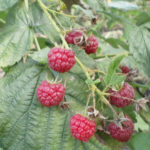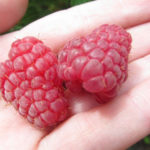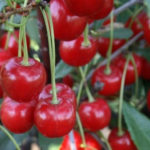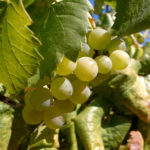Plum variety Memory Timiryazev
The names of people who have made a certain contribution to a particular industry are commonly referred to as achievements in various fields. Among such examples in plant breeding, one can single out the Pamyat Timiryazev plum. A whole group of scientists, V.A. Efimov, S.N. Satarov, H.K. Enikeev. The variety was bred at the All-Russian Institute of Selection and Technology of Horticulture and Nursery and was named in honor of the famous natural scientist, Professor K.A.Timiryazev. Skorospelka Krasnaya and Victoria were chosen as parental forms. The obtained variety has been on state variety testing since 1948. In 1959, it was entered in the State Register of Plants of the Russian Federation in the Central (Kaluga, Bryansk, Ivanovskaya, Vladimirskaya, Ryazan, Moscow, Smolensk, Tula regions) and Srednevolzhsky (Penza, Samara, Ulyanovsk regions, the Republic of Mordovia and Tatarstan) regions. Also, this plum is found in Belarus, Moldova, Ukraine, the Baltic States. Timiryazev's memory is recognized as suitable for intensive gardening.
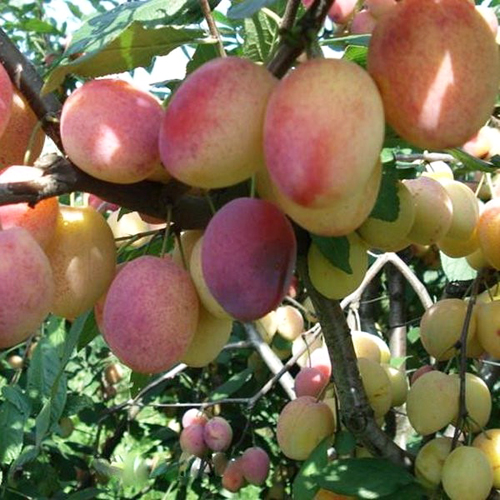
Description
A tree of medium growth, covered with a rounded, slightly spreading crown. Leafiness and density are moderate. The bark of the shoots is covered with light pubescence, the color is light brown. The buds of the variety are small, grow slightly deviating from the shoot. The shape of the leaves is obovate, the edge is one-toothed, the color of the leaf plate is light green. The leaves are large, the total size is 38.3 sq. see The surface of the leaf plate is slightly wrinkled, smooth above, with slight pubescence below. The sheet thickness is average. The petiole is ordinary, has glands. The flowers are medium-sized, white, cup-shaped, the petals do not close, the number of stamens is 21, they are located below the stigma of the pistil. The ovary is naked. The calyx is cupped, the peduncle is pubescent, has the usual size. Plum blossoms and fruiting occurs on annual shoots and bouquet branches.
The fruits in Memory of Timiryazev are not very large, weighing 20 - 25 grams, ovoid, slightly elongated. The peduncle of the variety is thin, not very long. The separation is dry. The skin of the fruit is smooth, without pubescence, rather densely covered with a waxy coating. The main color is yellow, the cover blush is pink-red, speckled, occupies the most part of the fruit, it is especially pronounced from the sunny side. There are many subcutaneous points. The apex and base are oval, the ventral suture is poorly developed. The pulp is yellow, medium-bodied. The consistency is quite dense, fine-grained, slightly fibrous. The oval stone, weighing 1 gram, which is 5.5% of the total weight of the fruit, separates well. The sugar content and aroma of the pulp are moderate. Taste from sweet and sour to almost insipid. Tasting score 4.2 points. The content of substances in 100 grams of plum pulp: 15% of dry matter, 1.4% of free acids, 9.3% of sugars, 11 mg of ascorbic acid.
Characteristics
- Timiryazev's memory begins to bear fruit rather quickly after planting. This happens for 3-4 years;
- flowering begins in the second decade of May;
- fruit ripening occurs at the end of August - beginning of September, in terms of timing, the variety belongs to the middle late;
- the yield is above average. Over the past 16 years, this figure has been 9 kg per tree. According to other sources, one plum in fruitful years brings up to 35 kg of fruit;
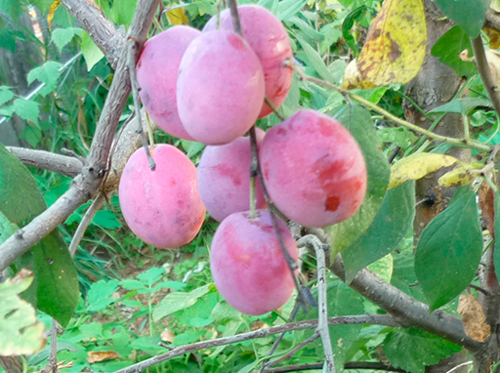
- fruiting is periodic, but not abrupt. Over 16 years of observation, 5 crop failures were noted;
- the plant has good immunity, it is weakly affected by clasterosporium and fruit rot, only by 0 - 1.5 points;
- the variety is not so resistant to pests, the defeat is estimated at 2.5 - 3 points. Mites are especially dangerous, they can greatly harm the tree;
- branches and flower buds are moderately damaged by frost, shoots at -25 ° C or -30 ° C are severely affected. But the restorative ability in Memory of Timiryazev is very good;
- drought resistance in plum is moderate;
- the transportability of the fruits is at a high level, keeping quality is also good;
- the way of using fruits is universal. They are useful in their natural form, from which you can cook jam, jam, jam.
Pollinators
Despite the fact that the variety is self-fertile, pollinators planted nearby will help increase the regularity of fruiting and improve the quality of the crop. This task will do well. Hungarian Moscow, Ripe red.
Planting and leaving
It is possible to plant the Memory of Timiryazev in the spring, before the budding of the seedling begins, or in the fall, when at least 2 - 3 weeks are left before the onset of stable cold weather. It is advisable to choose a plot sunny, protected from the prevailing winter winds, with a groundwater level not higher than 1.5 meters to the surface. Watering is carried out as needed. Be sure to carry out preventive spraying against pests. Pruning is carried out in the spring, freeing the crown from thickening. In especially harsh winters, the bole, skeletal branches and the root zone should be insulated.
Timiryazev's memory is valued for self-fertility, the ability to quickly recover after a hard winter and for the good quality of the fruit. Plums are perfectly transported and processed for tasty and healthy preservation. The disadvantage of the variety is insufficient winter hardiness and instability to pests.

